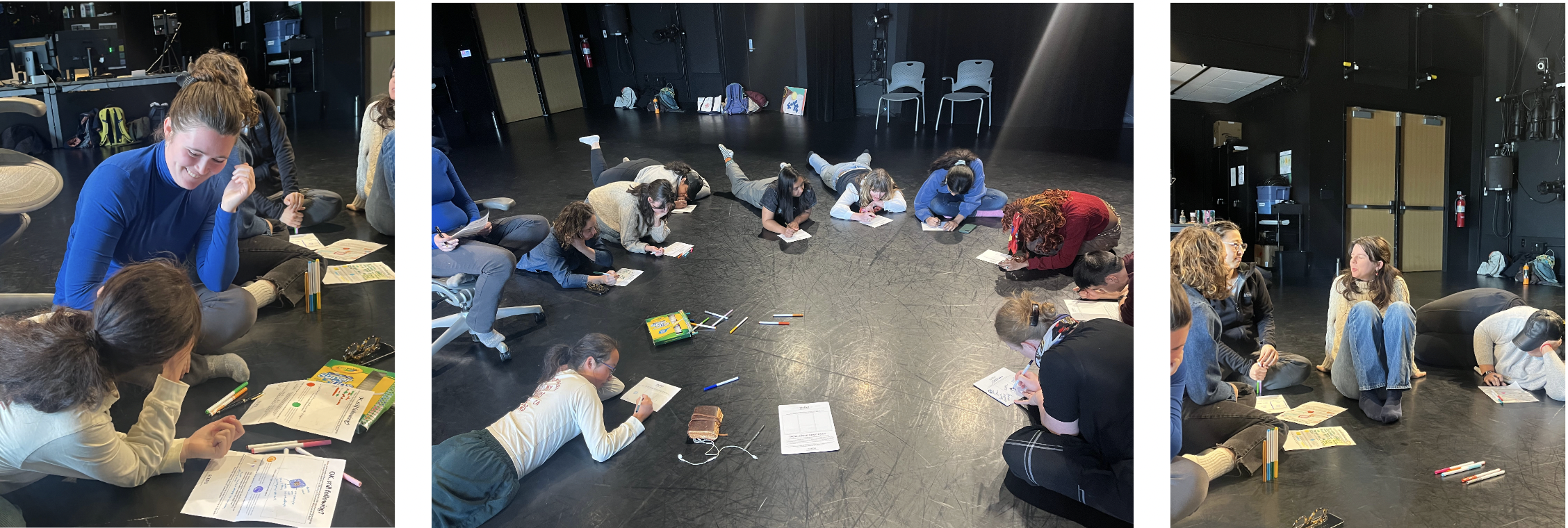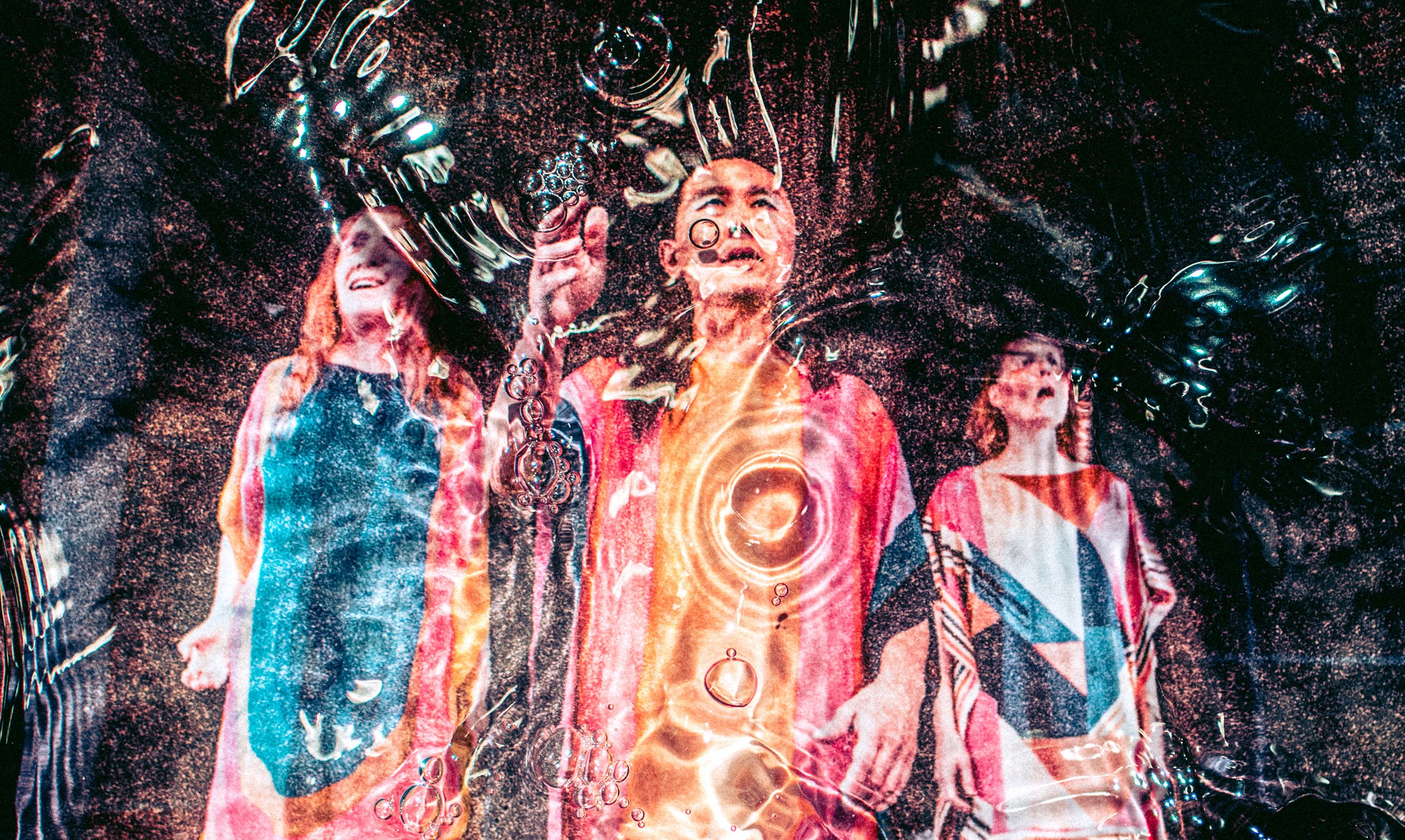Reflective Visual Journaling
What is a visual journal and how might this type of journaling open possibilities for reflecting and documenting our experiences differently? Visual journaling is a form of journaling that combines visual and text-based mark making. It opens the possibilities for creatively processing experiences through arts-based ways of knowing and doing.
Mapping the Unseen
Think of a space that is typically invisible or overlooked, like reified borders, redlined neighborhoods, landmarks removed and covered over by colonial infrastructures, lava tubes, or subterranean waterways. Call this hidden space into being, ideally in a non-2D, non-visual way. How might you represent a map of this space through movement, generational (and) body memory, sound, breath, texture, physical and/or emotional feelings, or narrative and storytelling?
Toward an Expansive Solitude
A common myth about writing: It’s a solitary art. But I’ve never been very good at writing alone and while the image of the lone writer in a secluded cabin might be romantic, it’s appeal starts and stops in my imagination. Functionally, writing is always an act of reaching outward: to the anticipated reader, a future self, a time unknown. I write because I’m trying to understand the world, what I owe it, and how to love it.
What is the palpable sense of feral fringe?
my process often feels like a wandering-wondering mode not led by a concrete intention, but more out of little impulses and curiosities. via inviting pores, pauses, porosity and permeability in human actions, my practice asks: how may human move with and to be moved by the more-than-human world where livable actions such as deep listening, entangled agency, symbiotic relations, and odd kinship are already implicated in their dailiness? how do human become with, participating in the livable relations happening in the more-than-human world which we are a part of?
SEEDS: An Approach to Earth-Centered Design Education
SEEDS is a project that stands for Social and Environmental Exercises for Design Beyond Sustainability. I learned from working with Norah in Livable Futures that sustainability too often means sustaining extractive practices. In a time where the term sustainability has become overused, but fails to strengthen our connection to the Earth, I found the opportunity to look at design practices beyond sustainability. These are practices that invite us to remember our part within the intricate systems of the Earth, creating personal and professional action that integrate life of all beings, minerals, plants and unseen forces into our work. I call this way of being (and thinking) Earth-centered, meaning that it shifts our perspective from prioritizing the human species to considering the totality of the Earth when making choices in our lives. Through this intention, SEEDS was born, offering activities that inspire us to take Earth-centered action towards a better collective future for all.
Actionable Creative Responses to Planetary Conditions with Bhumi Patel
My name is Bhumi. I am Gujarati and a first-generation US citizen. I was raised on the ancestral lands of the Seminole and Timucua people. I am the daughter of Mala and granddaughter of Malti and Lalitaben.
No matter where I go, I am a woman of color.
It is literally written on my body.
Very often, I am drowning. I cannot find my space in academia or artmaking, one always asking the other why I’m not there instead.
New! eBook on Livable Futures full of inspiration and ideas
Climate Gathering online experience now available
Since 2015, Livable Futures artistic director and co-founder Norah Zuniga Shaw has been creating performance experiences as climate justice activism. As she shared in a recent interview, “it is not about instrumentalizing dance to talk ABOUT climate change, although that is really important as well, but in our work, we are using the intrinsic practices of dance improvisation and sonic arts to do climate activism directly, like a 21st century techno-poetic teach-in.”
OASIS Faux-Asis performance ritual for rest and recovery
Movement Rituals: Witchdancing w/ Michael J. Morris
Inspired by the work of Alkistis Dimech, Tatsumi Hijikata, Kazuo Ohno, Anna Halprin, and Keith Hennessy: Witchdancing is a a Butoh-based movement ritual practice developed from Michael Morris’ practice, and an ongoing exploration in both witchcraft and Butoh. This practice asks: what if a dance is also a spell with which we conjure our bodies and the worlds in which they live? In Witchdancing, we move through a continuous series of images, qualities, and states, engaging in a metamorphosis of the body. The movement is improvisational and requires no previous dance experience. The practice will be supported by an original soundscore by Moxy Martinez.
Community Movement (virtual events) to mark Fridays for the Future
Immersive Sonic Performance via the Web
Fructify: Reclaiming the Present and Forming a Fruitful Future
Unbecoming Carbon
Un-becoming Carbon: Traveling in Intercellular Space is an interactive installation exploring the importance of carbon sequestration by plants and invites audiences into an immersive world through physical, audio and virtual experiences moving through macroverses and the microverses alive with possibility and the wisdom of plants.
Virtual Ink Making Workshop: How to Make Your Own Ink with Marie Lerma
The workshop was hosted virtually on April 22, which is Earth Day. A mix of students, artists, and faculty attended and watched me walk through how inks are made, and then watched me make a blueberry ink. We discussed a brief history of ink making, what the components of ink are, and then the process of creating ink.
Decolonizing OSU for Livable Futures
While the trip and community learning was cancelled due to COVID-19, here we share some of the ideas and questions that informed the development of the field school as a way to spur reflection on indigenous lives, settler debt, and land use - and what this moment of crisis during the pandemic reveals about the demands we all must make for livable futures.
Pursuit of Happiness
A Planetary Parable: Comparative Studies + Women’s, Gender & Sexuality Studies Teaching Cluster
A parable is a morality tale. In Julie Livingston’s new book, Self-Devouring Growth: A Planetary Parable as Told from Southern Africa (Duke University Press, 2019), tales from Botswana provide compelling evidence that development-driven growth is no kind of progress. Holding steady an insistence that better futures demand new imaginaries for human-animal-planetary relations, health, wellbeing, and sustainability, Dr. Livingston’s book illustrates the best of today’s thinking for livable futures.



















